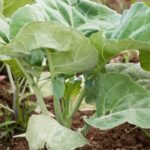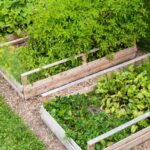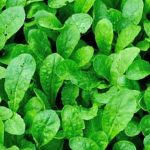Vegetable gardening is not only a popular hobby but also an important skill for self-sufficiency and sustainability. Growing your own vegetables allows you to have fresh, nutritious produce right at your fingertips, reduces your carbon footprint, and provides a rewarding sense of accomplishment. However, successful vegetable gardening requires knowledge and expertise in various aspects such as soil preparation, planting techniques, maintenance, troubleshooting, and harvesting.
This is where the Purdue Vegetable Gardening Guide comes in. Developed by experts at Purdue University, this comprehensive guide is a valuable resource for both beginner and experienced gardeners alike.
It provides all the information you need to start and maintain a thriving vegetable garden throughout the year. With its practical tips, step-by-step instructions, troubleshooting advice, and informative guidelines on harvesting and storage techniques, the Purdue Vegetable Gardening Guide is your go-to reference for maximizing your gardening efforts.
Whether you have a small urban balcony or a spacious backyard, the Purdue Vegetable Gardening Guide will empower you with the knowledge to transform any space into a productive garden. From selecting suitable varieties for your region to ensuring proper watering and fertilizing practices, this guide covers it all.
Join us as we delve into the world of vegetable gardening with the help of this invaluable resource provided by Purdue University. Get ready to unleash your green thumb and reap the rewards of your labor.
Understanding the Basics of Vegetable Gardening
Vegetable gardening can be a rewarding and fulfilling activity that allows you to enjoy fresh, homegrown produce right in your own backyard. However, in order to have a successful garden, it is important to understand the basics of vegetable gardening and what it takes to create an optimal growing environment. The Purdue Vegetable Gardening Guide is an invaluable resource that can help you navigate through the essential requirements for a thriving garden.
One of the first things to consider when starting a vegetable garden is the location. Most vegetables require at least six hours of full sunlight each day, so it is important to choose a spot that gets adequate sunlight. The Purdue Vegetable Gardening Guide provides guidance on site selection and offers tips on how to maximize sunlight exposure if you have limited options.
In addition to sunlight, another key requirement for a successful vegetable garden is well-prepared soil. The guide emphasizes the importance of soil testing to determine its nutrient content and pH level.
It also provides instructions on how to improve your soil’s fertility by incorporating organic matter such as compost or aged manure. Whether you are dealing with sandy soil, clay soil, or something in between, the Purdue Vegetable Gardening Guide offers advice on how to amend the soil and create optimal growing conditions for vegetables.
Furthermore, water management is crucial for healthy plant growth. The guide emphasizes the importance of providing consistent moisture while avoiding overwatering which can lead to root rot or disease. It provides irrigation recommendations based on specific vegetable needs and discusses different watering techniques such as drip irrigation or using soaker hoses.
By understanding these basic requirements for a successful vegetable garden, you will be better equipped to plan and prepare for your own gardening adventure. Whether you are a beginner or an experienced gardener looking for new insights and techniques, referring to the Purdue Vegetable Gardening Guide will ensure that you are on the path towards creating a thriving and bountiful garden.
A Closer Look at the Purdue Vegetable Gardening Guide
The Purdue Vegetable Gardening Guide is a valuable resource for both beginner and experienced gardeners. This section will provide an in-depth look at the structure and key features of this comprehensive guide.
Structure of the Guide:
The Purdue Vegetable Gardening Guide is organized in a user-friendly manner, making it easy to navigate and find the information you need. The guide is divided into several sections, each covering different aspects of vegetable gardening. These sections include understanding the basics of vegetable gardening, preparing your garden, planting and sowing, maintaining your vegetable garden, troubleshooting common problems, harvesting and storage, and expanding your knowledge.
Key Features of the Guide:
One of the key features of the Purdue Vegetable Gardening Guide is its emphasis on providing research-based information. The guide incorporates findings from scientific studies conducted by experts at Purdue University’s Department of Horticulture and Landscape Architecture. This ensures that the information provided is accurate, reliable, and up-to-date.
Another important feature of the guide is its step-by-step instructions and clear explanations. Whether you are a novice gardener or have been gardening for years, these instructions make it easy to understand and follow along. Additionally, the guide includes helpful illustrations and diagrams to further assist with comprehension.
Furthermore, the Purdue Vegetable Gardening Guide offers practical tips and techniques that can help you achieve optimal results with your garden. From soil preparation to pest control methods, each aspect is thoroughly covered with detailed explanations. The guide also provides recommendations on which vegetables are best suited for specific growing conditions or regions.
Preparing Your Garden
Soil preparation and site selection are crucial elements in setting up a successful vegetable garden. The quality of your soil and its suitability for the vegetables you wish to grow can greatly impact the health and productivity of your plants. The Purdue Vegetable Gardening Guide offers valuable tips and recommendations to help you prepare your garden for optimal growth.
Soil Preparation
Before planting, it is essential to prepare your soil properly. The first step is to test the pH level of your soil. The Purdue guide emphasizes the importance of having a soil pH within the recommended range for vegetable gardening, usually between 6 and 7. Amendments like lime or sulfur may be necessary to adjust the pH if it falls outside this range.
In addition to pH levels, soil texture also plays a significant role in plant growth. Sandy soils drain quickly but can lack nutrients, while clayey soils retain moisture but can become compacted. By amending your soil with organic matter such as compost or well-rotted manure, you can improve its structure and enhance its ability to hold water and nutrients.
Site Selection
Choosing the right location for your vegetable garden is equally important. The Purdue guide advises selecting a spot that receives at least six hours of direct sunlight per day. Most vegetables require ample sunlight for healthy growth and productivity.
Furthermore, consider factors such as water drainage when selecting a site for your garden. It’s crucial to avoid areas prone to flooding or excessive moisture retention, as these conditions can lead to root rot and other issues. Look for a slightly sloping area that allows good water drainage.
Additionally, proximity to water sources should be taken into account when selecting a site for easier irrigation throughout the growing season. Having easy access to water will make it more convenient for regular watering, especially during dry periods.
By following these soil preparation and site selection tips from the Purdue Vegetable Gardening Guide, you can establish an ideal environment for your plants to thrive. Properly preparing your garden sets the foundation for healthy plant growth and increases the chances of a bountiful harvest.
Planting and Sowing
When it comes to vegetable gardening, proper planting and sowing techniques can significantly impact the success of your garden. The Purdue Vegetable Gardening Guide offers valuable recommendations and step-by-step instructions to help you achieve optimal growth and productivity in your garden. By following Purdue’s guidelines, you can ensure that your plants are given the best start possible.
Before planting, it is crucial to prepare your soil adequately. The guide recommends conducting a soil test to determine its nutrient content and pH level. This information will help you make informed decisions about fertilization and soil amendments. Additionally, removing weeds, rocks, and other debris from the planting area is essential for creating an ideal environment for your vegetables.
Once your soil is prepared, it is time to plant the seeds or transplants according to Purdue’s recommendations. The guide provides specific instructions for each vegetable type, including recommended planting depth, spacing, and timing. Following these guidelines will help ensure that your plants have enough space to grow and receive adequate sunlight and nutrients.
After planting, it is crucial to provide proper care for your vegetables throughout their growth cycle. Adequate watering is essential, especially during dry periods. The guide advises using mulch to conserve moisture and prevent weed growth around the plants. Regularly monitoring for pests or diseases and taking appropriate measures to address them can also help protect your plants from potential damage.
Maintaining Your Vegetable Garden
Once you have successfully prepared your garden and planted your vegetables based on Purdue’s recommendations, it is crucial to understand how to maintain your vegetable garden properly. This section will explore important tips for watering, fertilizing, and weeding that will help ensure optimal growth and productivity.
Watering is one of the most critical aspects of maintaining a healthy vegetable garden. It is essential to provide the right amount of water to your plants without over or under watering them. The Purdue Vegetable Gardening Guide recommends watering deeply but infrequently.
This means thoroughly soaking the soil, allowing it to dry out slightly before watering again. Deep watering promotes deeper root growth and helps plants become more drought-tolerant. However, it is important not to let the soil dry out completely as certain vegetables may require consistent moisture.
Fertilizing is another key aspect of maintaining a productive vegetable garden. Vegetables require essential nutrients for their growth and development. The Purdue guide suggests using organic matter such as compost or well-rotted manure as a natural source of nutrients for your garden. Organic fertilizers release nutrients slowly over time, providing a steady supply of nourishment to your plants. Additionally, it is recommended to perform regular soil testing to determine any nutrient deficiencies and adjust your fertilizer application accordingly.
Lastly, weeding plays a significant role in maintaining the health and vitality of your vegetable garden. Weeds compete with plants for important resources like water, sunlight, and nutrients. Regularly remove weeds by hand or by using appropriate tools such as a hoe or cultivator.
Mulching can also help suppress weed growth by preventing sunlight from reaching weed seeds in the soil. The Purdue Vegetable Gardening Guide emphasizes the importance of staying vigilant with weed control throughout the growing season to prevent them from taking over your garden.
By following these tips on watering, fertilizing, and weeding, you will be able to maintain an optimal growing environment for your vegetable garden. Remember that each vegetable may have specific requirements, so it is important to consult Purdue’s recommendations for individual plants. With proper maintenance, you can ensure a healthy and productive harvest from your garden.
Troubleshooting Common Vegetable Garden Problems
Section:
One of the challenges that vegetable gardeners often face is dealing with various problems that can arise in their gardens. Fortunately, the Purdue Vegetable Gardening Guide provides valuable solutions and recommendations to help gardeners overcome these common issues. By understanding and implementing the troubleshooting strategies outlined in this guide, gardeners can effectively address problems and ensure the health and productivity of their vegetable plants.
The Purdue Vegetable Gardening Guide offers a comprehensive section dedicated to troubleshooting common vegetable garden problems. This section covers a wide range of issues that gardeners may encounter, including pests, diseases, nutrient deficiencies, environmental stressors, and more. Each problem is thoroughly explained, along with practical solutions and prevention tips.
To make it easier for gardeners to navigate through this section, the Purdue Vegetable Gardening Guide presents the information in an organized manner. Here are some helpful features:
- Problem Identification: This guide provides clear descriptions and images to help gardeners identify common issues in their vegetable gardens.
- Diagnosis: Once a problem is identified, the guide offers step-by-step instructions on how to diagnose the specific issue affecting the plants.
- Solutions: After diagnosing the problem, gardeners can refer to the recommended solutions provided by Purdue University experts. These solutions include organic and chemical treatments, as well as cultural practices that promote plant health.
- Prevention Strategies: The guide also emphasizes preventive measures to minimize future problems in vegetable gardens. Tips on crop rotation, proper spacing of plants, soil testing, and other preventive actions are included.
- Supportive Resources: For more in-depth knowledge on specific problems or advanced techniques for pest control or disease management, this section of the guide directs readers to additional resources such as websites, books, or publications.
By leveraging the Troubleshooting Common Vegetable Garden Problems section of Purdue’s gardening guide, gardeners can confidently address any issues that arise in their vegetable gardens. Whether it’s identifying pests and diseases, addressing nutrient deficiencies, or managing environmental stressors, the guide equips gardeners with the information and strategies needed to maintain healthy and thriving plants.
Harvesting and Storage
In this section of the Purdue Vegetable Gardening Guide, we will delve into the important topic of harvesting and storage. Knowing when and how to harvest your vegetables, as well as implementing proper storage techniques, is crucial to ensure that you can enjoy the fruits of your labor throughout the season and even beyond.
When it comes to harvesting vegetables, timing is key. Harvesting too early or too late can greatly affect the flavor and quality of your produce. The Purdue Vegetable Gardening Guide provides specific guidelines on when each vegetable should be harvested, taking into consideration factors such as size, color, and texture. These guidelines are based on extensive research and experience from Purdue experts in order to help you achieve optimal results.
Once you have harvested your vegetables, proper storage techniques are essential to preserving their freshness and extending their shelf life. Different vegetables require different storage conditions, including temperature, humidity levels, and packaging methods. The Purdue Vegetable Gardening Guide offers valuable tips on how to store each type of vegetable properly, ensuring that they retain their flavor and nutritional value for a longer period.
| Vegetable | Harvesting Guidelines | Storage Tips |
|---|---|---|
| Tomatoes | Pick when fully ripe but still firm. | Avoid storing in the refrigerator; store at room temperature. |
| Lettuce | Harvest leaves as needed when they reach desired size. | Store in a plastic bag with damp paper towels in the refrigerator. |
| Carrots | Harvest when roots are bright orange and easily pulled from the ground. | Remove leaves before storing; store in a cool, dry place like a basement or root cellar. |
By following the proper harvesting and storage techniques outlined in the Purdue Vegetable Gardening Guide, you can enjoy your homegrown vegetables at their peak freshness and flavor. Whether you plan to consume them immediately or preserve them for future use, these guidelines will help ensure that your hard work in the garden pays off.
Expanding Your Knowledge
In addition to providing a comprehensive guide on vegetable gardening, the Purdue Vegetable Gardening Guide also offers a wealth of additional resources and references to further expand your knowledge and enhance your gardening skills. These resources are designed to support gardeners at all levels of experience, from beginners to seasoned veterans.
One valuable resource included in the Purdue Vegetable Gardening Guide is a list of recommended books and publications. These resources cover a wide range of topics related to vegetable gardening, including specific crop guides, organic gardening methods, pest control techniques, and more. By referring to these recommended readings, you can delve deeper into specific aspects of vegetable gardening that interest you or address any challenges you may face in your own garden.
Furthermore, the Purdue Vegetable Gardening Guide provides links to various online resources that can provide further guidance and information. These include reputable websites and organizations dedicated to agriculture, horticulture, and sustainable gardening practices. Online forums and communities can also be found where you can connect with fellow gardeners, exchange experiences, ask questions, and seek advice on specific issues.
Additionally, the guide highlights workshops, seminars, and events organized by Purdue University Extension specifically for vegetable gardeners. These events offer opportunities for hands-on learning, networking with experts in the field, and gaining practical insights from experienced gardeners. Attending such events can help you stay up-to-date with the latest research findings and trends in vegetable gardening while also connecting with fellow enthusiasts.
By making use of these additional resources offered within the Purdue Vegetable Gardening Guide, you can continually expand your knowledge base and keep up-to-date with new techniques or emerging trends in this ever-evolving field. Whether you are looking for information on disease management strategies or exploring alternative approaches such as companion planting or vertical gardening, these resources will provide you with valuable insights that can take your vegetable gardening endeavors to the next level.
Conclusion
In conclusion, the Purdue Vegetable Gardening Guide is an essential resource for anyone looking to start or improve their vegetable garden. By following the guidelines and recommendations provided in this guide, gardeners can empower themselves with the knowledge and skills necessary to have a successful and productive garden.
The guide offers a comprehensive overview of the basics of vegetable gardening, including information on soil preparation, site selection, planting techniques, maintenance tasks, common problems and troubleshooting solutions. It covers every step of the gardening process from start to finish, ensuring that gardeners have a thorough understanding of what it takes to create a thriving garden.
Not only does the Purdue Vegetable Gardening Guide provide step-by-step instructions, but it also offers additional resources and references for those who want to expand their knowledge further. This guide serves as a valuable tool for both beginner and experienced gardeners alike, providing them with the information they need to make informed decisions about their gardens.
By utilizing the Purdue Vegetable Gardening Guide, individuals can feel confident in their abilities to cultivate healthy plants and harvest bountiful crops. With its user-friendly format and wealth of information, this guide is truly empowering for gardeners of all levels. So whether you are just starting out or have been gardening for years, be sure to take advantage of this valuable resource from Purdue University for a successful and fruitful vegetable garden.
Frequently Asked Questions
What is the best month to start a vegetable garden?
The best month to start a vegetable garden can vary depending on your climate and the specific vegetables you plan to grow. Generally, it is recommended to start planting in the spring after the last frost date for your region.
This ensures that the soil has warmed up enough for seeds to germinate and young plants to thrive. Many gardeners choose to start their vegetable gardens in April or May when temperatures have sufficiently risen, and there is less risk of late frosts damaging tender seedlings.
When should I start a vegetable garden in Indiana?
In Indiana, the ideal time to start a vegetable garden also depends on the local climate. The average last frost date in Indiana varies across different regions, but it usually falls between mid-April and early May.
To determine the best time for your specific location, it is advisable to consult the USDA Hardiness Zone map or inquire with local gardening experts or extension offices. Starting your vegetable garden shortly after the last frost date will ensure optimal conditions for successful growth and help prevent potential damage from late cold weather.
How should I layout my vegetable garden?
When laying out your vegetable garden, there are several factors to consider for efficient use of space and optimal plant growth. First, assess the amount of sunlight each area of your garden receives throughout the day, as most vegetables require at least six hours of direct sunlight daily. It’s important to place taller crops on the northern side of your plot so they won’t shade smaller plants. Additionally, consider grouping plants with similar water needs together to make irrigation more efficient.
Crop rotation is another key aspect – avoid planting the same family of vegetables in the same location year after year as it can lead to nutrient imbalances and increased pest pressure. Instead, rotate through different beds annually or biennially according to compatible crop families. Lastly, leave enough space between rows and individual plants for air circulation and easy access for maintenance tasks such as weeding and harvesting.

If you’re looking to get into vegetable gardening, or are just looking for some tips on how to make your current garden better, then you’ve come to the right place! My name is Ethel and I have been gardening for years. In this blog, I’m going to share with you some of my best tips on how to create a successful vegetable garden.





